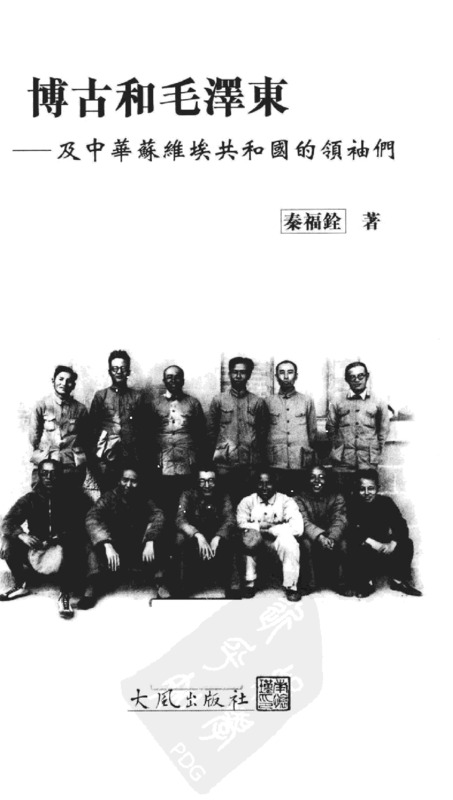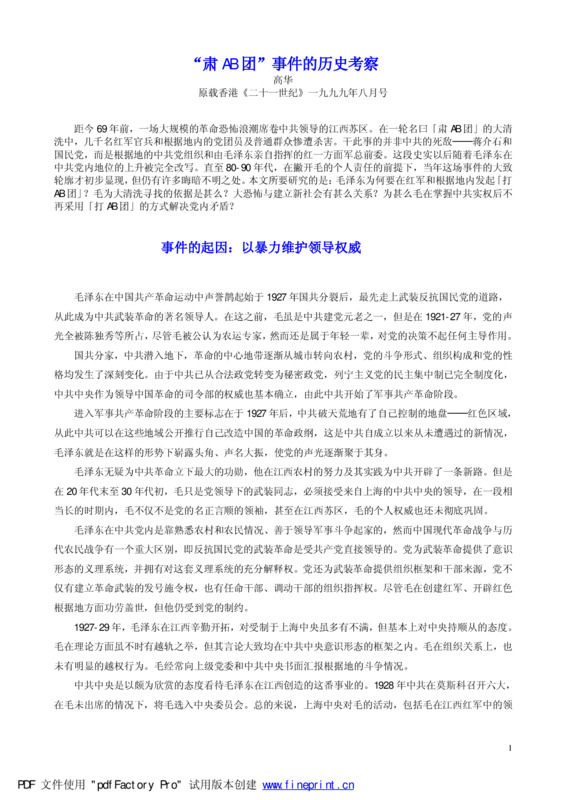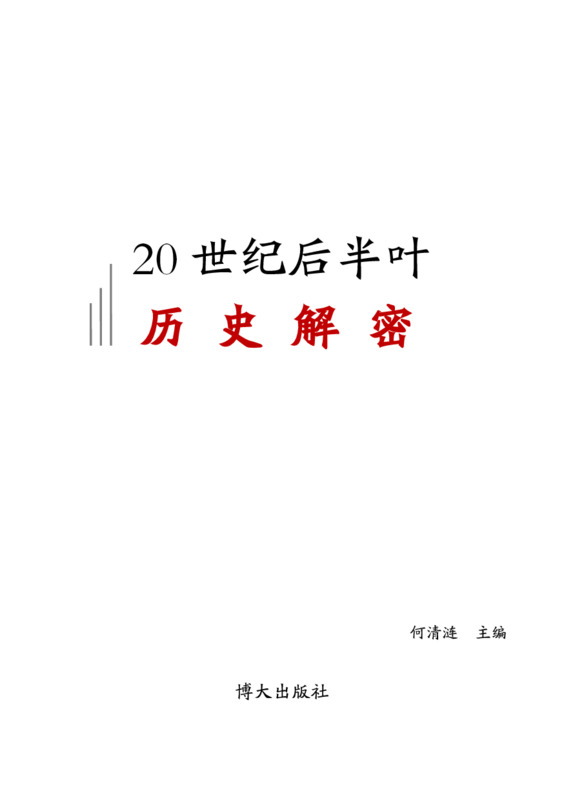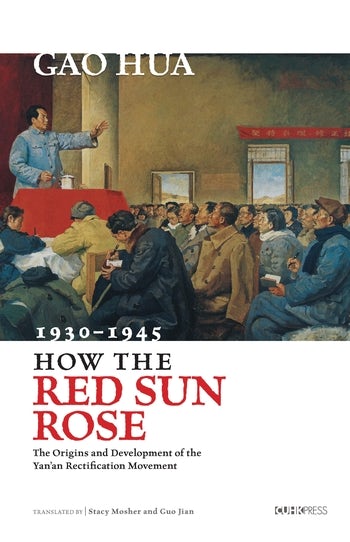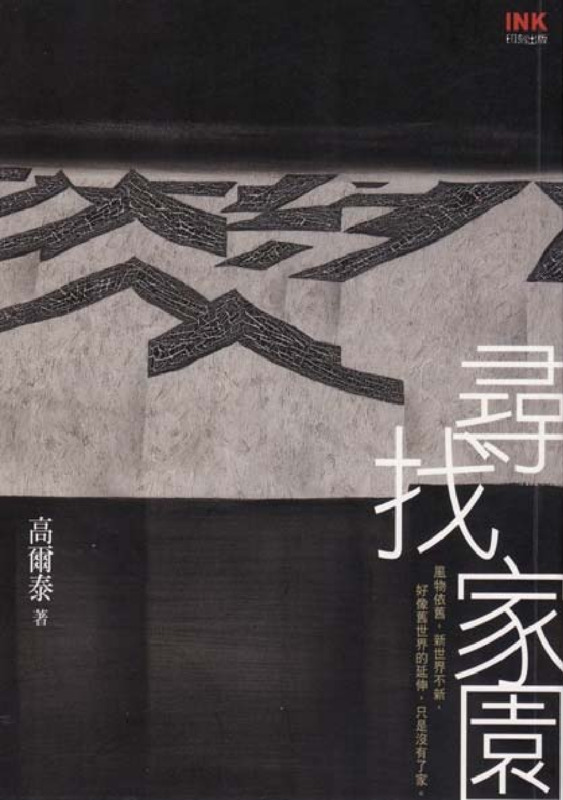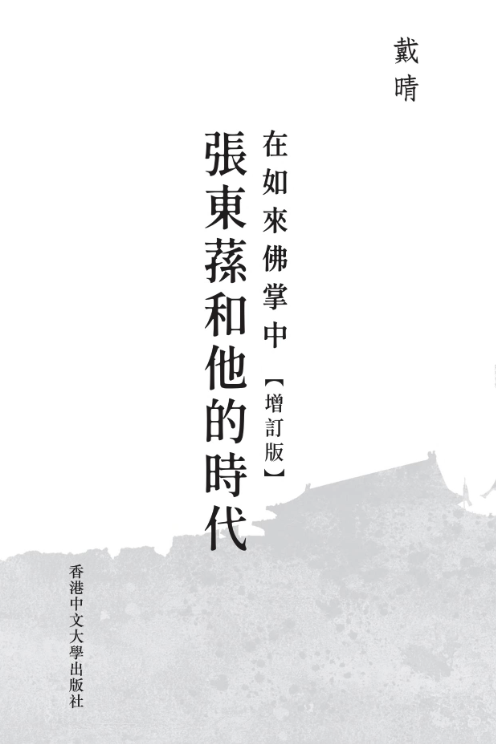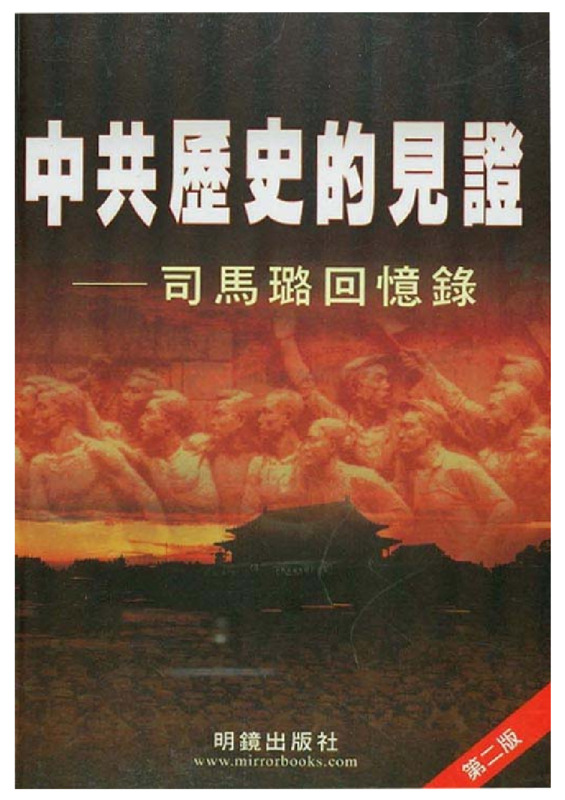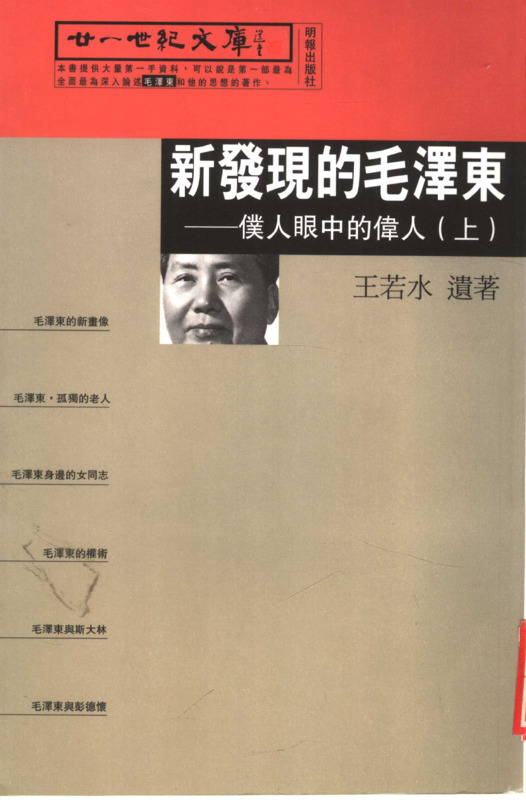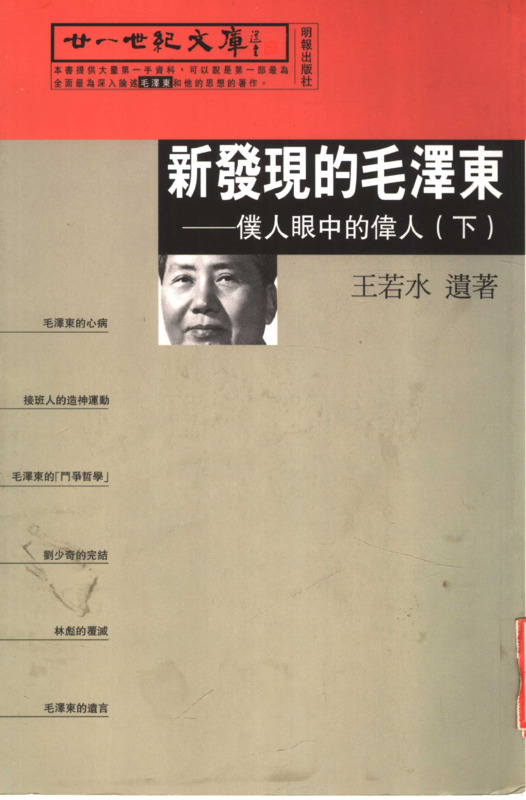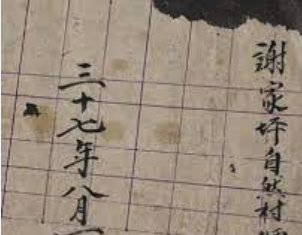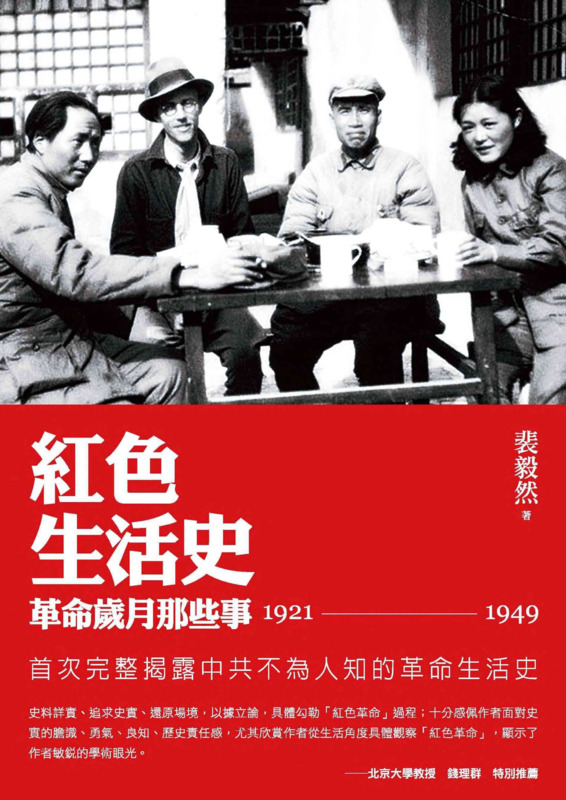Explore the collection
Showing 37 items in the collection
37 items
期刊
Istiqlal mejmu’esi/The Independence
“Istiqlal” mejmu’esi 1930-yillarning bashliridiki Sherqiy Türkistan milliy inqilabi we uning netijiside qurulghan Sherqiy Türkistan Islam Jumhuriyiti heqqide birinchi qol tarixiy menbe bergüchi siyasiy, ijtima’iy, iqtisadiy, diniy, edebiy we tenqidiy mejmu’edur.
20-esirning aldinqi yérimidiki Sherqiy Türkistanning siyasiy we ijtima’iy tarixi tetqiqatida Uyghurlarni asas qilghan yerlik xelqlerning aghzaki tarix matériyalliri hemde yazma menbelirige étibar bérilmey keldi. Uyghurlarni asas qilghan yerlik milletler 1930-we1940-yillardiki Sherqiy Türkistanning siyasiy tarixida asasliq rol alghuchi ijtima’iy topluq hésablansimu, emma meyli kommunist Xitay istilasidin kéyinki Xitay hökümet tarixshunasliqida bolsun yaki xelq’aradiki Ottura Asiya tetqiqatida bolsun, ularning öz til-yéziqidiki tarixiy menbeler hemde ularning éytimidiki yerlik tarixchiliq en’enisi izchil halda nezerdin saqit qilinip keldi. Téximu éniqraq qilip éytqanda, Uyghurlarning hazirqi zaman tarixi ularning öz éytimida emes, belki Xitay hökümet tarixshunasliqining ramka ichidiki éytimida yézilip keldi; Ularning öz béshidin ötküzgen tarixiy kechürmishliri ularning öz tili, öz yéziqi we öz hékayiliridiki éytimlarda emes, belki bashqilarning tili, yéziqi we hékayiliridiki wastiliq bayanlarda éytilip keldi. Shundaq, ularning özlirini ipade qilishigha imkaniyet bérilmidi, ular peqet bashqilar teripidin ipade qilinishqa mejbur boldi.
“Istiqlal” mejmu’esi 1930-yillardiki Sherqiy Türkistan milliy inqilabi tarixidiki del mushu boshluqni toldurghuchi Uyghur til-yéziqidiki yigane menbelerning biridur. Eslide mezkur mejmu’eni her ikki heptide bir qétim neshir qilip tarqitish pilanlan’ghan bolsimu, emma 1933-1934-yillardiki Rayonning murekkep we turaqsiz siyasiy weziyiti seweblik, peqetla 1-2 qoshma sani neshir qilinipla toxtap qalghan. Bügünki künde mezkur mejmu’ening esli nusxasini Xitaydiki, jümlidin Shinjang Uyghur Aptonom Rayonidiki herqandaq bir arxip yaki kutupxanidin tapqili hem körgili bolmaydu. “Istiqlal” mejmu’esining birqanche dane esli nusxasi nöwette Seudi Erebistanidiki Türkistan Kutupxanisida, Shiwétsiyediki Lund Uniwérsiteti Kutupxanisi Yarring Yighmisi (Gunnar Jarring Collection)da, Shiwétsiye dölet arxipi (Riksarkivet) da we Istanbuldiki Shiwétsiye Tetqiqat Inistituti (Swedish Research Inistitute) ning kutupxanisida saqlanmaqta.
“Istiqlal” mejmue’si 1933-yilining ikkinchi yérimida Qeshqerde qurulghan Sherqiy Türkistan Istiqlal Jem’iyitining neshir epkari süpitide neshir qilin’ghan. 1931-yili Qomuldin bashlan’ghan Sherqiy Türkistan milliy inqilabi 1933-yilining bashlirigha kelgende jenubqa kéngiyip, aldi bilen Xoten wilayiti yerlik qozghilangchilarning qoligha ötken we Xoten Islam Hökümiti jakarlan’ghan. Shu yili 5-aylarda Qeshqer wilayitimu yerlik qozghilangchilarning qoligha ötüp, Qeshqerde birlikke kelgen musteqil Sherqiy Türkistan Jumhuriyiti qurushning jiddiy teyyarliqi élip bérilghan. 1933-yili 8-ayda Qeshqerde bir qisim yerlik inqilabchi serxillar bash qoshup, aldi bilen Sherqiy Türkistan Istiqlal Jem’iyiti qurghan we musteqil Sherqiy Türkistan Jumhuriyiti qurushning teyyarliqigha jiddiy kirishken. “Istqiqlal” mejmu’esi mezkur jem’iyetning neshir-epkari süpitide qurulghusi Sherqiy Türkistan Islam Jumhuriyiti üchün siyasiy we nezeriyiwiy asas tiklesh meqsitide neshir qilin’ghan.
“Istiqlal” mejmu’esining 1933-yilliq tunji sani (1-2-qoshma sani)da mezkur mejmu’ening meqset-nishani, Sherqiy Türkistan Istiqlal Jem’iyitining nizamnamisi, Qeshqerde Sherqiy Türkistan Islam Jumhuriyitining qurulushi we hökümet bayannamisi, hökümet teshkili we kabént ezaliri, Sherqiy Türkistan Islam Jumhuriyitining asasiy qanuni, Sherqiy Türkistan milliy inqilabining qisqiche tarixi, Sherqiy Türkistan xelqige qilinghan chaqiriq, Chet’ellerdiki Türk-musulman qérindashlargha muraji’et, Sherqiy Türkistan dölitining yéngi pul-mu’amilisi qatarliq höjjet xaraktérliq muhim matériyallar bérilgen. Mejmu’ening kéyinki bölikide Sherqiy Türkistandiki eng yéngi weziyet we milliy inqilab xewerliri hemde Qeshqer ehwali tonushturulghan. Alahide tekitleshke tégishlik yéri shuki, mejmu’ening axiriqi sehipiliride Sherqiy Türkistan Edebiyatigha béghishlan’ghan mexsus maqalilar, she’irlar, chaqiriqlar, mektep balilirining naxsha tékistliri we Sherqiy Türkistan marshi bérilgen.
Mezkur mejmu’ediki höjjet xaraktérliq matériyallar 1933-yilidiki Sherqiy Türkistan Islam Jumhuriyiti tarixini tetqiq qilishta birinchi qol muhim menbe hésablinidu. Bu mejmu’ege bésilghan Sherqiy Türkistan Islam Jumhuriyitining Asasi Qanuni shu mezgildiki musulmanlar dunyasida küchlük tesir peyda qilghan. Eyni waqitta Yawropada siyasiy pa’aliyet élip bériwatqan Türkistan muhajirliri Qeshqerde neshir qilin’ghan “Istiqlal” mejmu’esidiki bir qisim maqale we höjjetlerni tashqiy dunyagha tonushturghan. “Istiqlal” mejmu’esining tunji sanigha bésilghan Sherqiy Türkistan Islam Jumhuriyitining Asasiy Qanunining toluq tékisti Fransiye paytexti Parizhda neshir qiliniwatqan “Yash Türkistan” mejmu’esining 1934-yilliq 3 sanigha uda ulap bésilghan.
“Istiqlal” mejmu’esining ich muqawisigha “bu mejmu’ening shu’ari dinda, tilda, dilda, pikirde we ishta birlik” dep yézilghan. Bu shu’ar 19-esirning axiriqi charikide Rusiye musulmanliri arisida bashlan’ghan jeditizm herikitining bayraqdari Ismail Gaspirinski (1851-1914) teripidin otturigha qoyulghan “tilda, pikirde we ishta birlik” dégen meshhur chaqiriqtin élin’ghan.
“Istiqlal” mejmu’esi Hijriye 1352-yilining Ramizan éyida, Miladiye 1933-yilining 11-12-ay mezgilide Qeshqerde neshir qilinip tarqitilghan. Mezkur mejmu’ening bash muherriri Muhemmed Emin Sufizade bolup, u 20-esirning bashlirida Tashkent, Buxara, Istanbul we Misirda oqughan. 1920-yillarda Rusiye Türkistanida Bolshéwiklar hakimiyitige qarshi qurbashilar (basmichilar) herikitige qatnashqan. 1930-yillarning bashliridiki Sherqiy Türkistan milliy inqilabi mezgilide neshriyatchiliq we teshwiqat ishlirida aktip rol oynighan. Qeshqer we Aqsu qatarliq jaylarda oqutquchi bolup, zamaniwiy milliy mekteplerni rawajlandurushta hesse qoshqan. 1937-yili Sherqiy Türkistan milliy inqilabi meghlub bolghandin kéyin qolgha élinip, Ürümchide militarist Shéng Shisey türmiside öltürülgen.
“Istiqlal” mejmu’esining tili klassik Türki-Uyghur (Chaghatay) tilidin hazirqi zaman Uyghur tiligha ötüsh mezgilidiki ötkünchi dewrge mensup bolup, uningdiki maqale-eserler til, yéziq, imla we ipadilesh jehettin pütkül Türki tilliq xelqler chüshineyleydighan ortaq edebiy tilda yézilghan. Bu mejmu’ediki maqale-eserler hazirgha qeder Xitay, In’giliz yaki bashqa tillargha terjime qilinmighan.
The irregular periodical <i>Istiqlal (The Independence)</i> is a firsthand historical source concerning the national independence movement that erupted in East Turkestan in the early 1930s and its direct outcome — the establishment of the East Turkestan Islamic Republic (ETIR) on November 12, 1933. It is a valuable collection of documents that provides critical, self-reflective content about the political, social, economic, religious, and cultural environment of East Turkestan during that era.
In the study of China's frontier history during the first half of the 20th century, particularly in the field of modern political and social history of Xinjiang, oral histories and written records of local people, primarily the Uyghurs, have long been overlooked. Despite the fact that Uyghurs and other indigenous people played a central role as the main social actors in Xinjiang's political history during the 1930s and 1940s, both official Chinese historiography after the rule of the Chinese Communist Party and international scholarship on Xinjiang have consistently ignored historical documents in the languages of Xinjiang's indigenous peoples and their native historiographical traditions. To be precise, modern Uyghur history is not narrated by the Uyghurs themselves but is framed within China's official historical narrative. Their historical experiences are not expressed through their own language, script, and stories but are instead conveyed through the language, script, and narratives of others.
<i>The Independence</i> anthology is a rare historical document in the Uyghur language that fills this gap. According to the original plan of its publishers, Independence was intended to be issued biweekly. However, due to the complex and turbulent political situation in southern Xinjiang during 1933-1934, only the combined first and second issues were published before its discontinuation. Today, the original copies cannot be found in any archives or libraries within China, including the Xinjiang Uyghur Autonomous Region. A small number of surviving original copies are held in the private library of Rahmetulla Turkistani, a Saudi Arabian scholar of Uyghur descent, the Gunnar Jarring Collection at Lund University Library in Sweden, the National Archives of Sweden (Riksarkivet), and the library of the Swedish Research Institute in Istanbul, Turkey.
The PDF version offered here came from the website of <a href="https://www.uyghurkitap.com/">"UyghurKitap" (UyghurBook)</a>. The founders of UyghurKitab website scanned the book and converted it into PDF with the permission of the Library of Rahmetulla Turkistani. CUA got permission from the UyghurKitab to publish it on our website.
Published in Kashgar in the second half of 1933 as the official publication of the East Turkestan Independence Association, the anthology emerged during a pivotal time. The East Turkestan national independence movement, which began in Qomul (Hami in Chinese) in 1931, had spread to various oases around the Tarim Basin by early 1933. The main southern East Turkestan oasis cities such as Hotan, Kashgar, and Aksu were successively brought under the control of local insurgent populations. Various rebel forces began preparations to establish a unified East Turkestan Republic. In August of that year, local rebel elites formed the East Turkestan Independence Association to actively prepare for the founding of the Islamic Republic. The Independence anthology served as the theoretical mouthpiece of this association, aiming to awaken the populace and lay the political and ideological foundation for the forthcoming Islamic Republic of East Turkestan.
The first combined issue of <i>The Independence</i> anthology (Issues 1-2, 1933) includes the following core content:
- The editorial mission and the charter of the East Turkestan Independence Association (ETIA)
- The declaration of the East Turkestan Islamic Republic (ETIR) established in Kashgar
- The composition of the government of the East Turkestan Islamic Republic and the list of cabinet members
- The full text of the Constitution of the East Turkestan Islamic Republic
- A brief history of the East Turkestan national independence movement
- A Letter to the People of East Turkistan and A Letter to Overseas Turkic Muslim Brothers
- An announcement regarding the issuance of new currency by the East Turkestan Islamic Republic
In the later sections, updates on the latest developments in East Turkistan, trends in the independence movement, and reports from the Kashgar region were published. Notably, the final section of the publication featured a dedicated East Turkestan literature column, including essays, poetry, manifestos, ethnic folk songs, and the lyrics to the East Turkestan March.
The documents published in the inaugural issue are indispensable historical materials for a comprehensive study of the East Turkestan Islamic Republic (1933-1934), which holds special significance in 20th-century Uyghur political history. The Constitution of the East Turkestan Islamic Republic, published in the anthology, had a profound impact on the Islamic world at the time. Political activists from Russian Turkestan (or Soviet Central Asia), who were in exile in Europe, introduced parts of the publication and its documents to the international community, including the full text of the Constitution of the East Turkestan Islamic Republic. This was subsequently reprinted over three consecutive issues in 1934 in the Paris-based magazine <i>Yash Türkistan (Young Turkistan)</i>.
The cover of the anthology bears the motto: "Unity in Religion, Language, Heart, Thought, and Action." This slogan is derived from the famous 19th-century initiative "Unity in Language, Thought, and Action," proposed and widely disseminated by Ismail Gasprinsky (1851-1914), a leader of the Russian Tatar Jaditism Movement (Muslim reform movement), in his periodical <i>Terjuman</i>.
<i>The Independence</i> anthology was published in Kashgar during the month of Ramadan in the Islamic year 1352 (November-December 1933 AD). Its editor-in-chief, Muhammed Emin Sufizade, had studied in Tashkent and Bukhara (present-day Uzbekistan), Istanbul (Turkey), and Cairo (Egypt) in the early 20th century. In the 1920s, he participated in the Basmachi movement against Bolshevik rule in Western Turkestan (Russian Central Asia). In the early 1930s, he dedicated himself to propaganda and publishing efforts for the East Turkestan independence movement, founding modern national education schools in Kashgar and Aksu. Following the failure of the East Turkestan independence movement in 1937, he was arrested by the warlord Sheng Shicai and executed in a prison in Urumqi.
The language of the publication largely reflects the transitional form of classical Turkic Chagatay literature into modern Uyghur, using a common written language comprehensible to readers across the Turkic language world. More specifically, the vocabulary, orthography, grammatical structure, and style of expression in the anthology embody the characteristics of early 20th-century Uyghur written language. It should be noted that the content of this anthology has not yet been translated into Chinese, English, or other languages.
Book
AB Corps and the Futian Incident
In 1930, a mutiny erupted in the Red Army in the town of Futian. In the ensuring purge, more than 700 officers were executed. After this, the campaign to root out Anti-Bolshevik (AB) groups spread to various parts of China, with 70,000 executed. Occurring just nine years after the founding of the CCP, it is one of the earliest and most significant purges in the party's early history.
The first person to pay attention to the Futian Incident was Professor Dai Xiangqing of the Jiangxi Provincial Party School. Starting in late 1979, he and other colleagues went to southern Jiangxi to collect materials, conduct interviews and investigate, and found that this was an unjust and wrong case, and began to publish articles on the matter.
In the early 1980s, Dai Xiangqing sent his article to a senior general in the PLA, Xiao Ke. After that, the research on the Futian Incident attracted the attention of senior central officials. The CCP's party history research agency sent people to Hunan and Jiangxi to investigate and collect materials. The Organization Department of the Central Committee of the Communist Party of China sent a review team for the Futian Incident and reported the vindication documents to the central government, but even today there is currently no official conclusion on the matter.
This book is an important study of the early history of the Communist Party of China, often mentioned by prominent independent historians, such as Yang Kuisong. As an officially recognized research project, this book does not make ideological breakthroughs, but its detailed historical materials, and its data index make it particularly valuable for understanding this historical event.
This book was published by Henan People's Publishing House in 1994.
Book
At the Crossroads of History
This book is Gao Hua's next masterpiece after *How the Red Sun Rose*. It entails a selection of papers published by the author between 1988 and 2004, covering the fields of Republican history, Communist Party history, and contemporary Chinese history. It captures the historical interaction between the present and the past. Gao reflects deeply on the far-reaching Chinese Communist Revolution. With a rigorous and empirical research methodology, he sketches a complex and colorful picture of history, presenting the multiple facets of twentieth-century China's history.
Book
Blood Letters: The Untold Story of Lin Zhao, A Martyr in Mao's China
This book is the brainchild of Prof. Lian Xi of Duke University, U.S.A. In March 2018, it was published in English by Basic Books in the U.S.A. In 2021, it was published in Chinese by Taiwan Business Press. Based on a large amount of historical materials as well as first-hand interviews, this book reconstructs Lin Zhao's life. It depicts the political development before and after the birth of New China, and presents the resilient will and beliefs of intellectuals in this era.
To purchase this book, please visit [the publisher](https://www.hachettebookgroup.com/titles/lian-xi/blood-letters/9781541644229/?lens=basic-books), or a bookseller.
Book
Bo Gu and Mao Zedong - and the Leaders of the Chinese Soviet Republic
Bo Gu (博古), real name Qin Bangxian (秦邦憲), was the top leader of the Chinese Communist Party (CCP) from 1931-1935, leaving his post as General Secretary of the CCP after the Zunyi Conference. The author of this book, who is Bo Gu's nephew, describes some important historical points in the early days of the Communist Party, the various activities among the top leaders of the CCP, such as Mao Zedong, and their relationships through the narratives and circumstantial testimonies of a number of knowledgeable people.
Book
Chen Cheng's Memoirs—The War between the Nationalists and Communists
Mr. Chen Cheng (courtesy name Cixiu; alias Shisou) served as the commander of the KMT army, commander-in-chief of the group army, commander-in-chief of the theater of operations, and chief of the general staff of the KMT. After the defeat of the Kuomintang army in Taiwan, Chen Cheng served the Administrative Yuan as Vice President of the Kuomintang. The volumes associated with *Chen Cheng's Memoirs* were published by Taiwan's National Museum of History in 2005. The series is divided into six volumes: *The Northern Expedition and the Chaos* (one volume), *The War between the Nationalists and Communists* (one volume), *The War of Resistance Against Japanese Aggression* (two volumes), and ***The Construction of Taiwan*** (two volumes). The first volume, *The War between the Nationalists and Communists* includes three parts: *Suppressing the Communists - Memories of the Military*, *Summary of Mr. Chen's Words and Actions*, and *Correspondence and Telegrams*. The book has original historical materials related to the five sieges and the counter-insurgency. In particular, this is the first time that important historical materials regarding the correspondence between Chiang Chung-cheng (courtesy name of Chiang Kai-shek) and Cixiu have been made public.
Book
China's "Left Scourge"
The author of this book, Lu Jianhua (pen name Wen Lu), was a former member of the Chinese Academy of Social Sciences who published this book in 1993. He was sentenced to 20 years in prison in 2005 for "allegedly leaking state secrets" in connection with the "espionage case" involving journalist Cheng Xiang.
Book
Collected Papers of Wu Yisan (1)
Writer Wu Yisan is the founder of Hong Kong's May 7 Society, an organization dedicated to the collection, research and publishing of everything related to the anti-rightist campaign in 1957,to restore and present the truth about a period of history characterized by severe persecution of remedial intellectuals. Over the years, Mr. Wu has devoted himself to compiling The Dictionary of Names of 1957 Victims. As the Chief Editor of The Hong Kong May 7 Society Publishing House, he also published The Biography of the Rightists of the May 7.
This book is a collection of his political papers, comprising more than 50 published and unpublished essays primarily written between 2004 and 2009, criticizing CCP from various perspectives, including history, current affairs, and culture.
Book
Collected Papers of Wu Yisan (2)
Writer Wu Yisan is the founder of Hong Kong Five-Seven Society, an organization established in 2007 and dedicated to the collection, research and publishing of everything related to the Anti-Rightist campaign in 1957, to restore and present the truth about a period of history characterized by severe persecution of intellectuals. Over the years, Mr. Wu has devoted himself to compiling *[The Dictionary of Names of 1957 Victims](https://minjian-danganguan.org/collection/1957%E5%B9%B4%E5%8F%97%E9%9A%BE%E8%80%85%E5%A7%93%E5%90%8D%E5%A4%A7%E8%BE%9E%E5%85%B8)*. As the Chief Editor of The Hong Kong Five-Seven Society Publishing House, he also published *The Biographies of the 1957 Rightists* and *[New Biographies of the 1957 Rightists](https://minjian-danganguan.org/collection/%E2%80%9C%E4%BA%94%E4%B8%83%E2%80%9D%E5%8F%B3%E6%B4%BE%E5%88%97%E4%BC%A0%EF%BC%88%E4%B8%8A%EF%BC%89)*.
This book is a collection of Wu’s political essays, including nearly one hundred of his published and unpublished essays and speeches between 1999 and 2017, including historical and current affairs analyses, with an emphasis on commentaries of persecuted intellectuals and political dissidents. These people are often called "traitors of China (han jian)" by CCP, but Wu Yisan argues that the CCP is the real traitor that betrays the country and its people.
Our archive also hosts another anthology of his, *[Is Chen Yi a Good Comrade](https://minjian-danganguan.org/collection/%E6%AD%A6%E5%AE%9C%E4%B8%89%E6%94%BF%E8%AE%BA%E6%96%87%E9%9B%86%EF%BC%881%EF%BC%89)*?
Article
Historical Examination of the Purge of the "AB" Regiment
More than 70 years ago, a massive wave of revolutionary terror swept through the CCP-led Jiangxi Soviet Union. Thousands of Red Army officers and soldiers, as well as members of the Party and the general public in the base area, were brutally murdered in a purge called the "Purging of the AB Troupe." Gao Hua's article examines why Mao Zedong initiated the "purge of the AB Group" in the Red Army and the base areas. What was Mao's rationale for the Great Purge? What is the relationship between the Great Terror and the establishment of a new society? Why did Mao stop using the "Fighting the AB Groups" as a means of resolving internal conflicts in the Party after he assumed real power in the CCP?
Book
How the Red Sun Rose
Originally published in Hong Kong in Chinese in 2000, Gao Hua’s epic description of an early Communist Party campaign against dissent describes a pattern of thought reform and control that would hold true for decades to come. Written despite official harassment and Gao’s failing health, How the Red Sun Rose is a touchstone for China’s unofficial history movement. It was translated into English in 2019 and published by Columbia University Press. Purchase here: https://cup.columbia.edu/book/how-the-red-sun-rose/9789629968229.
Book
In Search of My Homeland
“In Search of My Homeland” is a collection of essays in three volumes written by Gao Ertai during his exile abroad. In this book, Gao looks back on his life. From his hometown of Gaochun, a small town in Jiangsu Province, to Suzhou, then to Lanzhou, Jiuquan, Dunhuang, Beijing, Chengdu, and the United States, Gao has undergone tremendous suffering, lost his home and family, and finally had to go into exile in a foreign country. Even though the work is widely regarded as having great literary merit, Gao uses real names and places, which makes the work a valuable historical document, especially for describing the Great Famine, and the brutal suppression of intellectual life during the Cultural Revolution at the Dunhuang research academy, which is one of China's most prestigious cultural institutions.
In an [interview](https://web.archive.org/web/20240130211408/https://www.aisixiang.com/data/80804.html), Gao explained why he wrote the book: "Searching for my homeland is nothing but searching for meaning.... Life is short and small, and its meaning can only be rooted in the external world and in the long history. My sense of drift and meaninglessness, that is, a feeling that the world has no order, history has no logic, and the individual has no home, seems to be a kind of destiny. My writing is nothing but a resistance to this destiny."
In 2004, a censored version of the first two volumes of this book was published by Huacheng Publishing House in Guangzhou; in 2011, an updated version was published by Beijing October Arts and Literature Publishing House, but still censored. The version uploaded to our archive is the traditional Chinese version of the complete three volumes published by Taiwan INK Publishing House in 2009.
Book
In the Palm of Buddha (Updated Edition)
Zhang Dongsun is an unavoidable but deliberately obscured figure in modern China. Considered the earliest translator of Western philosophy, a famous newspaperman, political commentator, and professor at Yenching University; the first mediator between the Kuomintang and the Communist Party in 1949, and the first Central People's Government Member. He was convicted of treason in 1951 and disappeared. The well-known writer and journalist Dai Qing completed this historical documentary after eight years of investigation and writing and nearly ten years of revising and updating. Taking Zhang Dongsun's life as the main theme, he wrote about changing times from the late Qing dynasty to the Cultural Revolution.
An expanded edition of this book will be published by the Chinese University of Hong Kong Press in 2022. The following is the link to purchase books from the publisher:
https://cup.cuhk.edu.hk/index.php?route=product/product&product_id=3466
Book
Mao: The Unknown Story
This book presents the dramatic life of Mao Zedong, revealing a wealth of unheard-of facts: why Mao joined the Communist Party, how he came to sit at the top of the Chinese Communist Party, and how he seized China step by step. Writers Jung Chang and her husband Jon Halliday took ten years to complete this book, interviewing hundreds of Mao's relatives and friends, Chinese and foreign informants and witnesses who worked and interacted with Mao as well as dignitaries from various countries.
Purchase link:https://www.amazon.com/Mao-Story-Jung-Chang/dp/0679746323.
Book
Memoirs of Sima Lu: A Witness to the History of the Chinese Communist Party, The
Sima Lu (1919-2021) was an expert on the history of the Chinese Communist Party. He joined the Chinese Communist Party in 1937, then was politically persecuted in Yan'an, left it, and was expelled from the Party in 1941. In 1952, Sima Lu published “Eighteen Years of Struggle” in Hong Kong, writing about his tortuous journey from defecting to the Communist Party to his awakening and eventual choice of freedom. It became a sensation. He has made in-depth special studies on several leading figures of the CCP, such as Qu Qubai and Zhang Guotao. His memoir, “Witness to the History of the CCP”, is divided into three chapters according to its contents: the first is about his personal experience, the second about the first generation of CCP figures, and the third is devoted to the struggle between Mao Zedong and Zhou Enlai.
Book
Newly Discovered Mao, The: Volume I
Author Wang Ruoshui spent his early years studying philosophy at Peking University. He served as deputy editor-in-chief of the Communist Party newspaper “People's Daily” and was able to participate in high-level ideological discussions, gaining a deep understanding of Mao Zedong as a person and of his thought. He was one of the rare intellectuals within the CCP system who had an independent personality as well as the ability to think for himself. After his death from cancer, his wife, Feng Yuan, helped put together this posthumous book. Published by Ming Pao Press in 2002, it has been described as "the first and most comprehensive and in-depth discussion of Mao Zedong and his thought."
Book
Newly Discovered Mao, The: Volume II
Author Wang Ruoshui spent his early years studying philosophy at Peking University. He served as deputy editor-in-chief of the Communist Party newspaper "People's Daily" and was able to participate in high-level ideological discussions, gaining a deep understanding of Mao Zedong as a person and his thought. He was one of the rare intellectuals within the CCP system who had an independent personality as well as the ability to think for himself. After his death from cancer, his wife, Feng Yuan, put together this posthumous book. Published by Ming Pao Press in 2002, it has been described as "the first and most comprehensive and in-depth discussion of Mao Zedong and his thought.
Article
Poppies under the Red Sun: The Opium Trade and the Yan'an Model
In the 1990s, history scholar Chen Yongfa made a fundamental study of the opium economy two decades before the founding of the CCP and completed a monograph, "Poppies under the Red Sun: The Opium Trade and the Yan'an Model". Since then, more and more research articles have been written on the subject, and new information has appeared. Subsequently, the phenomenon of the opium economy of the CCP's Yan'an regime has also became an important field of study.
Book
Red Life History - The Revolutionary Years (1921-1949)
Professor Pei Yiran's book is the first complete revelation of the untold revolutionary history of the CCP. The book covers many important points in the history of the CCP, including the use of Soviet rubles to build the party, the landlords fundraising campaign, and the love life of Mao Zedong and Jiang Qing, among subjects.




